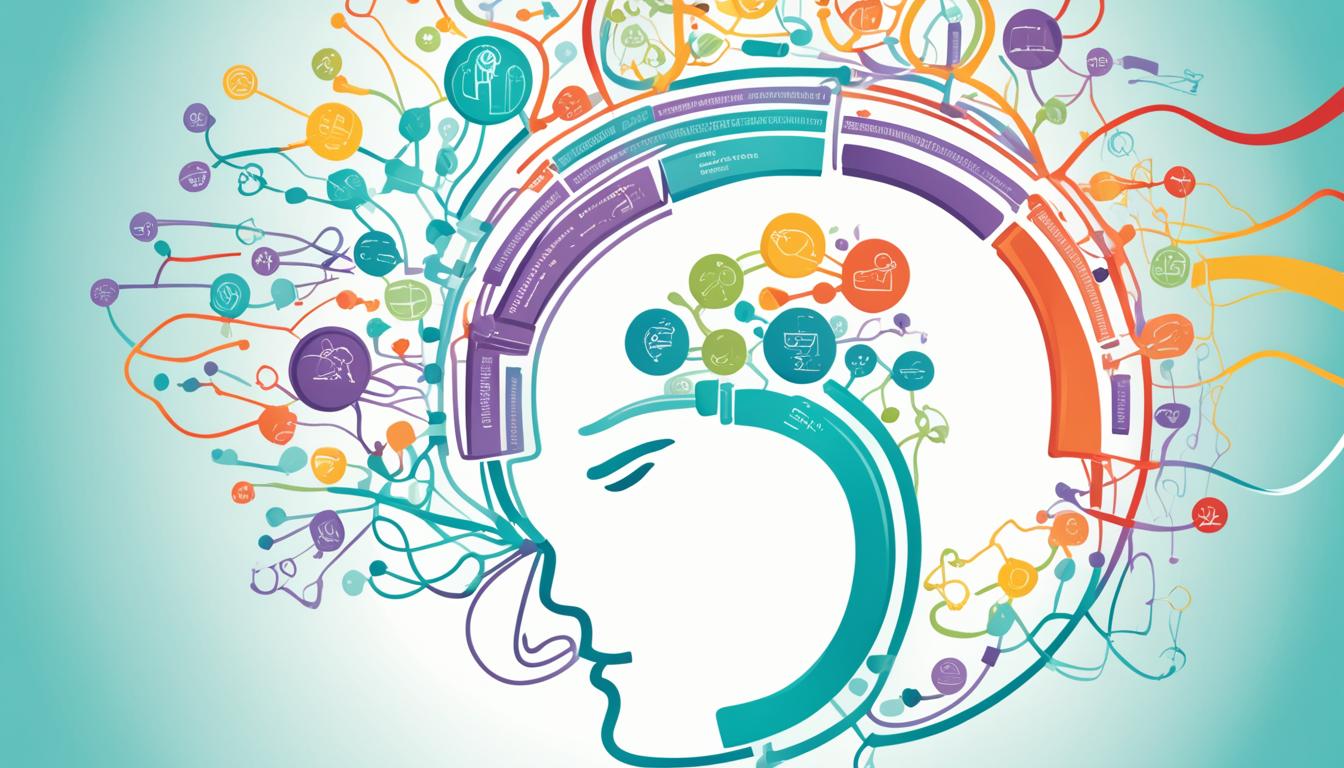Childhood Apraxia of Speech (CAS), known as Developmental Verbal Dyspraxia, affects speech. It makes movements for speaking imprecise and inconsistent. This leads to errors in making speech sounds and rhythm. CAS shows up in childhood and is different from acquired speech problems. Doctors diagnose CAS by checking for certain features like mixed-up sounds, choppy speech, and wrong rhythm. Kids with CAS might struggle in some other areas like moving their mouth in different ways, understanding speech, and reading and writing.
The main treatment for Childhood Apraxia of Speech uses special and intense therapy. This therapy helps the mouth muscles learn and uses the senses and pictures to guide. Unfortunately, there’s no straightforward cure for CAS, but therapy can make speech clearer and better. Some scientists think Stem Cell Therapy could be a fresh idea to treat CAS.
Key Takeaways:
- Childhood Apraxia of Speech (CAS) is a neurological disorder that affects speech production.
- CAS can be distinguished from acquired apraxia of speech and is characterized by inconsistent phonetic errors, disrupted transitions between sounds and syllables, and inappropriate prosody.
- Children with CAS often have deficits in other domains, including nonspeech motor behaviors, speech perception, syntax and morphology, and reading and writing.
- Treatment for CAS involves specialized and intensive therapy approaches that focus on motor learning, sensory exercises, and visual cues.
- While there is no cure for CAS, therapy can help improve speech intelligibility and communication skills.
- Stem Cell Therapy is an innovative approach being explored for the treatment of Childhood Apraxia of Speech.
Symptoms and Diagnosis of Childhood Apraxia of Speech
Childhood apraxia of speech (CAS) is a tough disorder that kids can face. It makes learning how to talk hard. It’s important to spot the signs early. Then, kids can get the help they need.
Symptoms of Childhood Apraxia of Speech
What’s noticed with CAS changes based on age. For babies and young kids, not making vowel sounds is common. They might not babble like other babies do. Saying first words late is another sign. They might struggle with some sounds, making it hard to connect words at first.
- A lack of vowel sounds and babbling
- Delayed first words
- Limited consonant and vowel sounds
- Difficulties in connecting the sounds of words
- Replacing difficult sounds with easier ones
- Deleting sounds that are hard to pronounce
As kids turn 2-6, more symptoms might appear. For them, making mistakes in speech that change is common. They get what’s said but find talking back hard. They could copy sounds better than words. Having trouble moving their mouth or tongue might show up. Pronouncing long words can be tough too. This gets even harder when they’re nervous.
- Inconsistent sound errors
- Better understanding of conversations than producing speech
- Difficulty imitating speech but easier imitation of sounds
- Problems with tongue and mouth movements
- Difficulty pronouncing long words
- Increased difficulty when anxious
- Decreased speech intelligibility, especially with strangers
- Unnatural intonation
Diagnosis of Childhood Apraxia of Speech
Figuring out CAS needs a full check by a speech specialist. They look at how well the mouth muscles move. Also, they check how sounds and words develop. Then, they see if the child gets what’s said and can talk back.
The specialist will then decide if it’s CAS. This isn’t easy and takes a lot of skill. A good diagnosis is key to getting the right help.
Spotting CAS signs early is super important. If your child is having a hard time with speech, don’t wait. Talk to a speech specialist. They can figure out what’s wrong and what to do next.
| Symptoms | Infants and Toddlers | Children Aged 2-6 Years |
|---|---|---|
| Lack of vowel sounds and babbling | ✓ | |
| Delayed first words | ✓ | |
| Limited consonant and vowel sounds | ✓ | |
| Difficulties in connecting the sounds of words | ✓ | |
| Replacing difficult sounds with easier ones | ✓ | |
| Deleting sounds that are hard to pronounce | ✓ | |
| Inconsistent sound errors | ✓ | |
| Better understanding of conversations than producing speech | ✓ | |
| Difficulty imitating speech but easier imitation of sounds | ✓ | |
| Problems with tongue and mouth movements | ✓ | |
| Difficulty pronouncing long words | ✓ | |
| Increased difficulty when anxious | ✓ | |
| Decreased speech intelligibility (especially with strangers) | ✓ | |
| Unnatural intonation | ✓ |
Stem Cell Therapy for Childhood Apraxia of Speech
Stem cell therapy shows promise in treating childhood apraxia of speech. This method aims to repair the brain by using stem cells. These stem cells can become different cell types that help in making speech.
The therapy’s goal is to improve how the brain works, helping with speech and motor skills. Although it’s still early, some studies are positive about its effects on speech.
But, it’s not widely available yet due to being an experimental treatment. This means more research is necessary to understand its full benefits and any risks. Yet, the early signs are good.
In conclusion, stem cell therapy could be a big step forward in treating childhood apraxia of speech. More research will help to make it safer and more effective. This could bring new hope for those affected, leading to better communicative and life outcomes.

